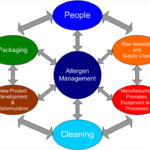A Hygiene and Sanitation Policy is a fundamental document that outlines the procedures and practices necessary to maintain cleanliness and prevent contamination within food handling and processing environments. This policy is crucial for safeguarding public health, ensuring the quality of food products, and complying with regulatory standards. It sets forth guidelines for personal hygiene, facility cleanliness, and sanitation practices to prevent foodborne illnesses and maintain a safe food production environment.
Importance of a Hygiene and Sanitation Policy
- Prevents Contamination: Ensures that food products are protected from contamination by pathogens, chemicals, and other hazards.
- Promotes Food Safety: Maintains high standards of cleanliness and hygiene, which are essential for food safety and quality.
- Compliance with Regulations: Helps meet legal and regulatory requirements related to food safety and sanitation.
- Protects Reputation: Demonstrates a commitment to hygiene and safety, enhancing the business’s reputation and customer trust.
- Reduces Risks: Minimizes the risk of foodborne illnesses and contamination-related issues that could impact consumers and the business.
Key Components of a Hygiene and Sanitation Policy
- Purpose and Scope
- Purpose: Define the objectives of the policy, including maintaining cleanliness, preventing contamination, and ensuring food safety.
- Scope: Specify the areas covered by the policy, including all food handling, preparation, and storage areas within the facility.
- Personal Hygiene Practices
- Handwashing: Establish procedures for proper handwashing, including when and how to wash hands, using appropriate handwashing techniques, and maintaining hand hygiene.
- Personal Protective Equipment (PPE): Outline requirements for wearing PPE such as gloves, aprons, and hairnets to prevent contamination.
- Health and Hygiene: Provide guidelines on health practices, including reporting illnesses, managing cuts and wounds, and avoiding work when unwell.
- Facility Cleanliness
- Cleaning Schedule: Develop a detailed cleaning schedule outlining the frequency and procedures for cleaning different areas, including food preparation surfaces, equipment, and storage areas.
- Cleaning Agents: Specify the types of cleaning agents and sanitizers to be used, ensuring they are effective and safe for food contact surfaces.
- Waste Management: Establish procedures for managing and disposing of waste, including separating recyclable and non-recyclable materials, and handling food waste to prevent contamination.
- Sanitation Procedures
- Sanitization of Equipment: Provide guidelines for the regular sanitization of food processing equipment, utensils, and tools to eliminate pathogens.
- Surface Sanitization: Detail procedures for sanitizing surfaces that come into contact with food, including counters, cutting boards, and food containers.
- Facility Sanitation: Include procedures for sanitizing the facility, including floors, walls, and storage areas, to maintain a clean and hygienic environment.
- Cleaning and Sanitation Equipment
- Maintenance: Outline maintenance procedures for cleaning and sanitation equipment to ensure they are in good working condition.
- Storage: Provide guidelines for the proper storage of cleaning tools and supplies, ensuring they are kept separate from food products.
- Training and Responsibilities
- Staff Training: Ensure that all staff members receive training on hygiene and sanitation practices, including the importance of cleanliness and proper procedures.
- Roles and Responsibilities: Define the roles and responsibilities of staff in maintaining hygiene and sanitation standards, including supervisors, cleaning personnel, and food handlers.
- Monitoring and Compliance
- Inspection Procedures: Implement regular inspections and audits to ensure adherence to hygiene and sanitation practices and identify areas for improvement.
- Recordkeeping: Maintain records of cleaning schedules, sanitation procedures, training sessions, and inspection results for accountability and regulatory compliance.
- Emergency Procedures
- Handling Contamination: Outline procedures for dealing with contamination incidents, including steps for cleaning affected areas and managing potential outbreaks.
- Responding to Equipment Failures: Provide guidance on how to respond to equipment failures that may impact sanitation, including temporary measures and repair procedures.
Summary
A Hygiene and Sanitation Policy is essential for ensuring the safety and quality of food products within any food-related business. By establishing clear procedures for personal hygiene, facility cleanliness, and sanitation, businesses can prevent contamination, promote food safety, and comply with regulatory standards. The policy should cover key areas such as handwashing, PPE, cleaning schedules, sanitation of equipment, waste management, and staff training. Regular monitoring, recordkeeping, and emergency procedures are crucial for maintaining high standards of hygiene and addressing any issues that arise. Ultimately, a well-implemented hygiene and sanitation policy supports a safe and reliable food production environment, protecting both consumers and the business.



